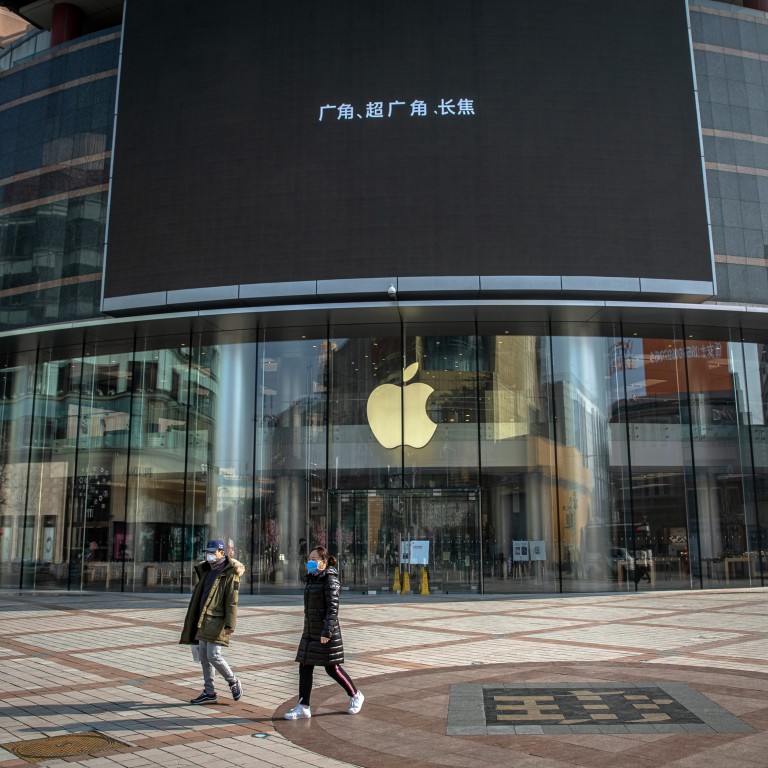
China’s first-quarter smartphone sales may halve because of coronavirus crisis
- The outbreak has resulted in retail shops being closed for an extended period and delayed smartphone production
China’s smartphone sales may plunge by as much as 50 per cent in the first quarter, as many retail shops have closed for an extended period and production has yet to fully resume because of the fast-spreading coronavirus, according to analysts.
The coronavirus outbreak, which has killed more than 900 people and roiled China’s manufacturing industry, comes as top Android handset vendors such as Huawei Technologies had hoped China’s 5G mobile network roll-out plans this year would help the world’s biggest smartphone market rebound after years of falling sales.
“Vendors’ planned product launches will be cancelled or delayed, given that large public events are not allowed in China,” research firm Canalys said in a report last week. “It will take time for vendors to change their product launch road maps in China, which is likely to dampen 5G [device] shipments.”
Canalys expects China’s smartphone shipments to halve in the first quarter from a year ago, while tech research firm IDC forecasts a 30 per cent drop.
Coronavirus: iPhone maker Foxconn warns staff to keep away from Shenzhen production base
Apple said last week that it is extending its retail store closures in China and has yet to finalise opening dates, as supplier Foxconn Technology Group, the main assembler of iPhones, struggles to fully resume production at its factories.
Taiwan-based Foxconn, formally known as Hon Hai Precision Industry, received government approval on Monday to resume production at a plant in the city of Zhengzhou in central China’s Henan province, but its major plant in the southern coastal city of Shenzhen in Guangdong province remain unopened.
Huawei, the world’s largest telecommunications equipment supplier and China’s biggest smartphone vendor, said its manufacturing capacity is “running normally”, without specifying further. But like many other local peers, Huawei relies heavily on third-party manufacturers for production.
If factories cannot resume production at full capacity on time, this could delay smartphone vendors’ ability to bring their newest devices to market, analysts said.
Xiaomi Corp, Huawei and Oppo, three of China’s top Android brands, are all expected to announce flagship devices in the first half of this year.
Qualcomm shares down after it says coronavirus outbreak in China threatens mobile phone supply, sales
Oppo told Reuters that while the impact of the coronavirus outbreak will affect operations at some local factories, “manufacturing capacity can be guaranteed effectively” thanks to its plants overseas.
Xiaomi did not respond to requests for comment.
“The delays in reopening factories and the labour return time will not only affect shipments to stores, it will also affect the product launch times in the mid- and long-term,” said Will Wong, an analyst at technology research firm IDC.
Globally, smartphone production will decrease by 12 per cent in the March quarter to a five-year low of 275 million units, research firm TrendForce said on Monday. It revised down iPhone production by 10 per cent to 41 million units, while Huawei’s output forecast was cut by 15 per cent to 42.5 million handsets.
Samsung Electronics, the world’s top smartphone maker, is seen the least affected by the virus outbreak, as its main production base is located in Vietnam, the TrendForce report said, lowering its production forecasts by just 3 per cent to 71.5 million units.

